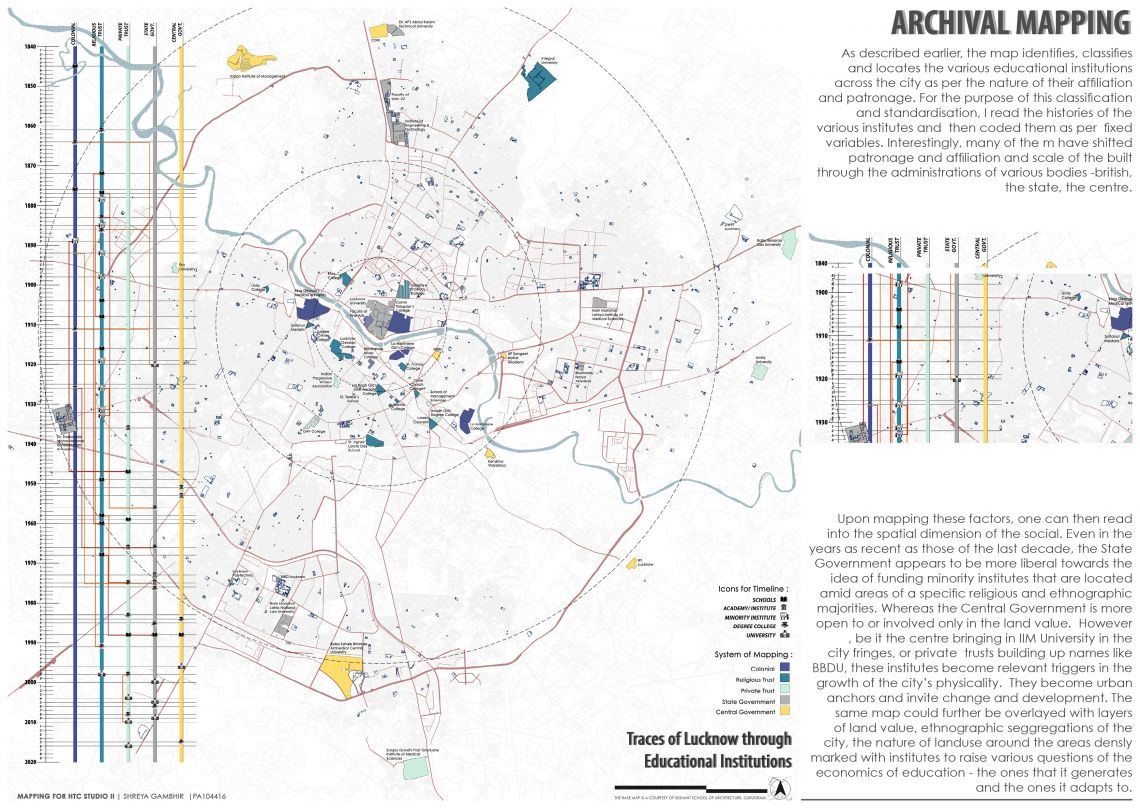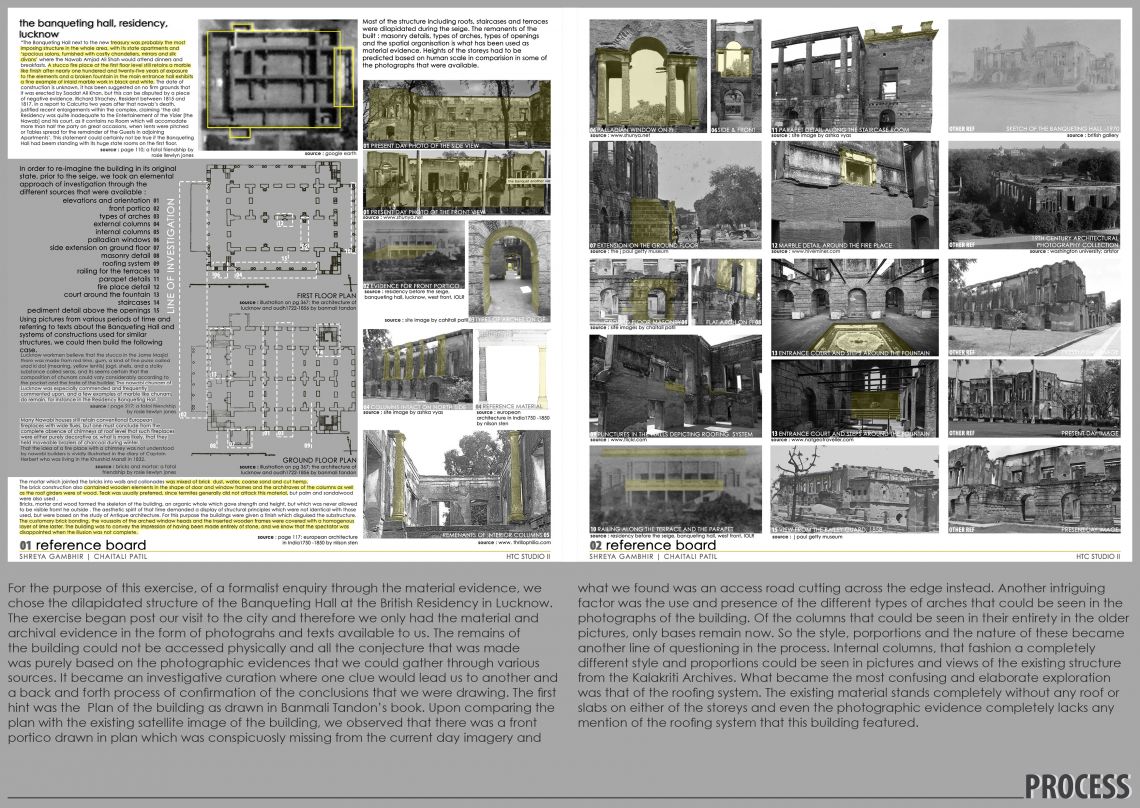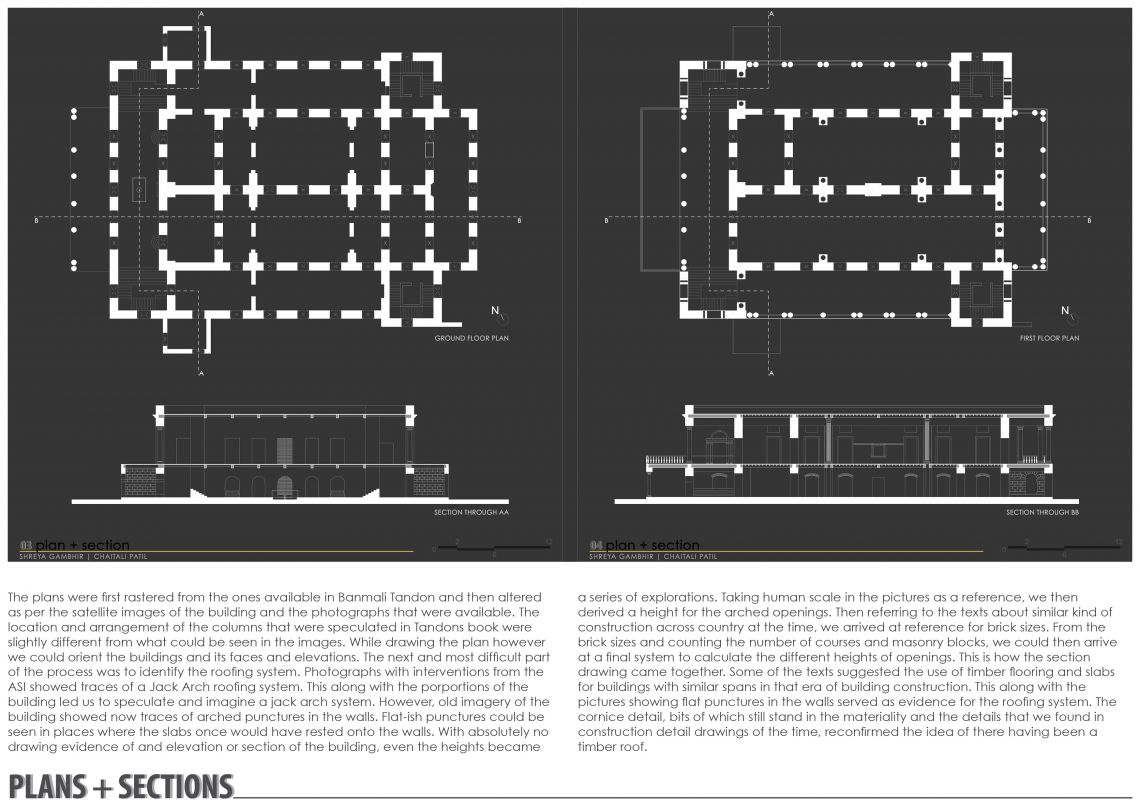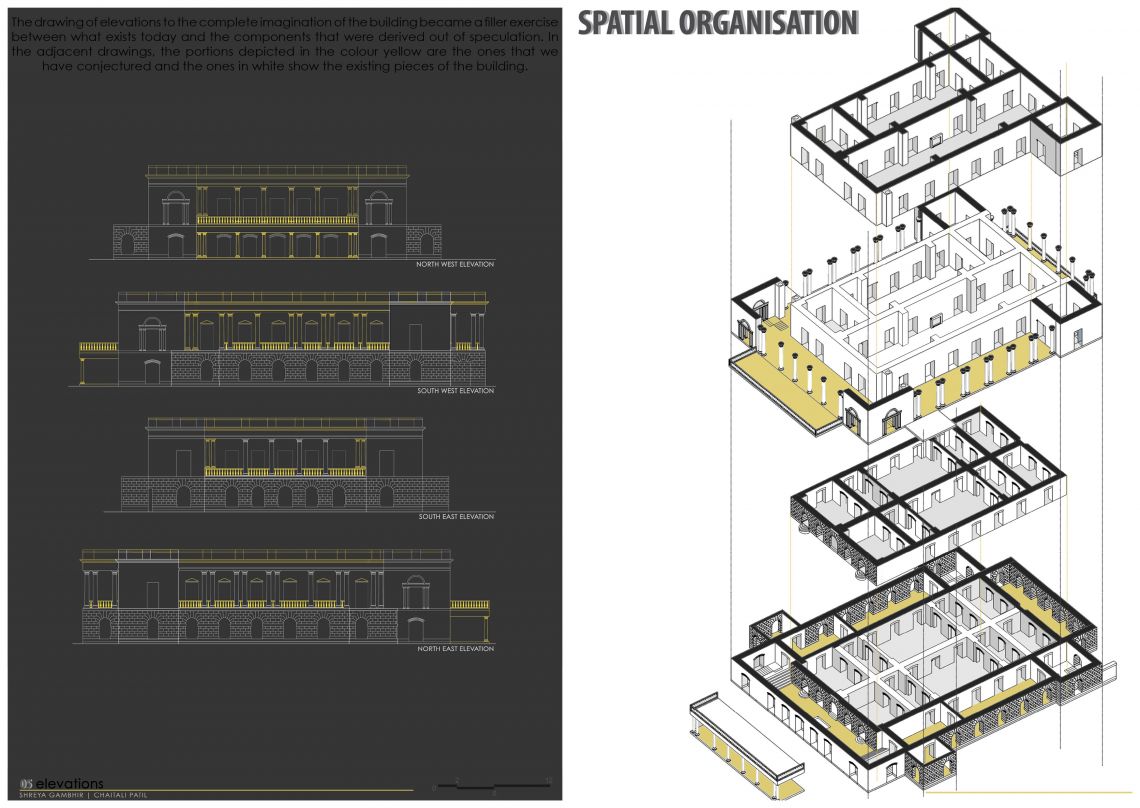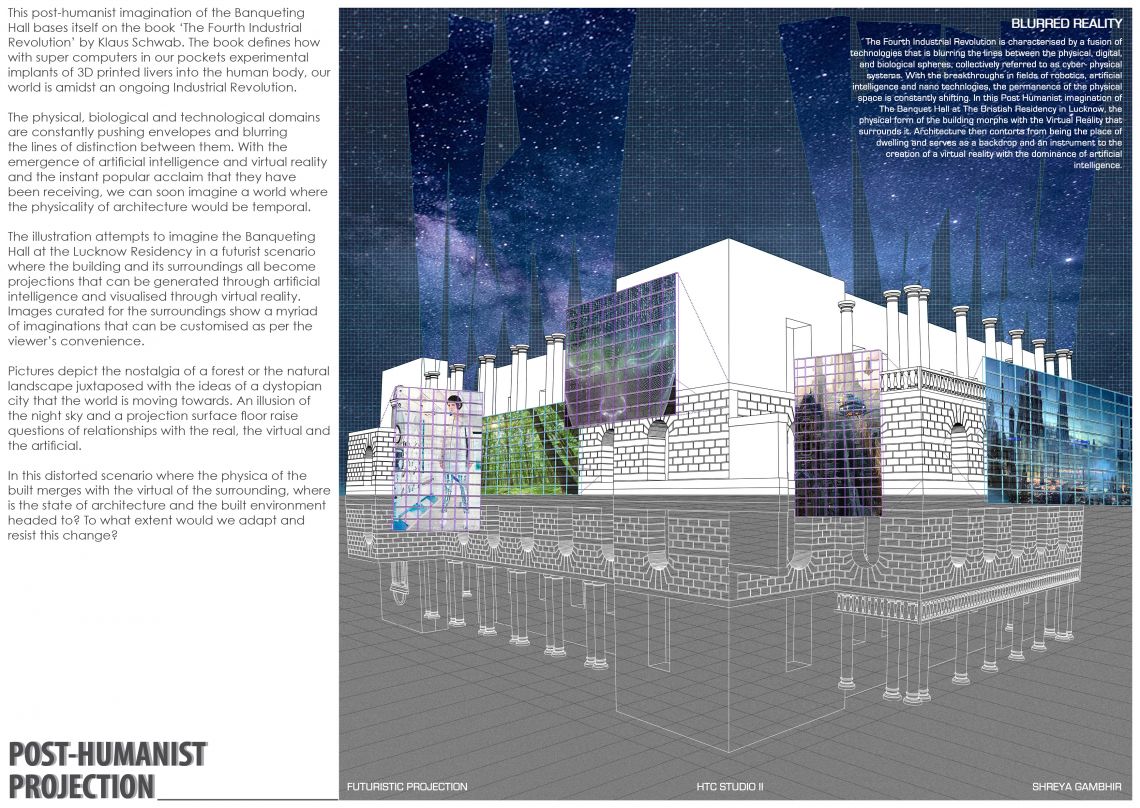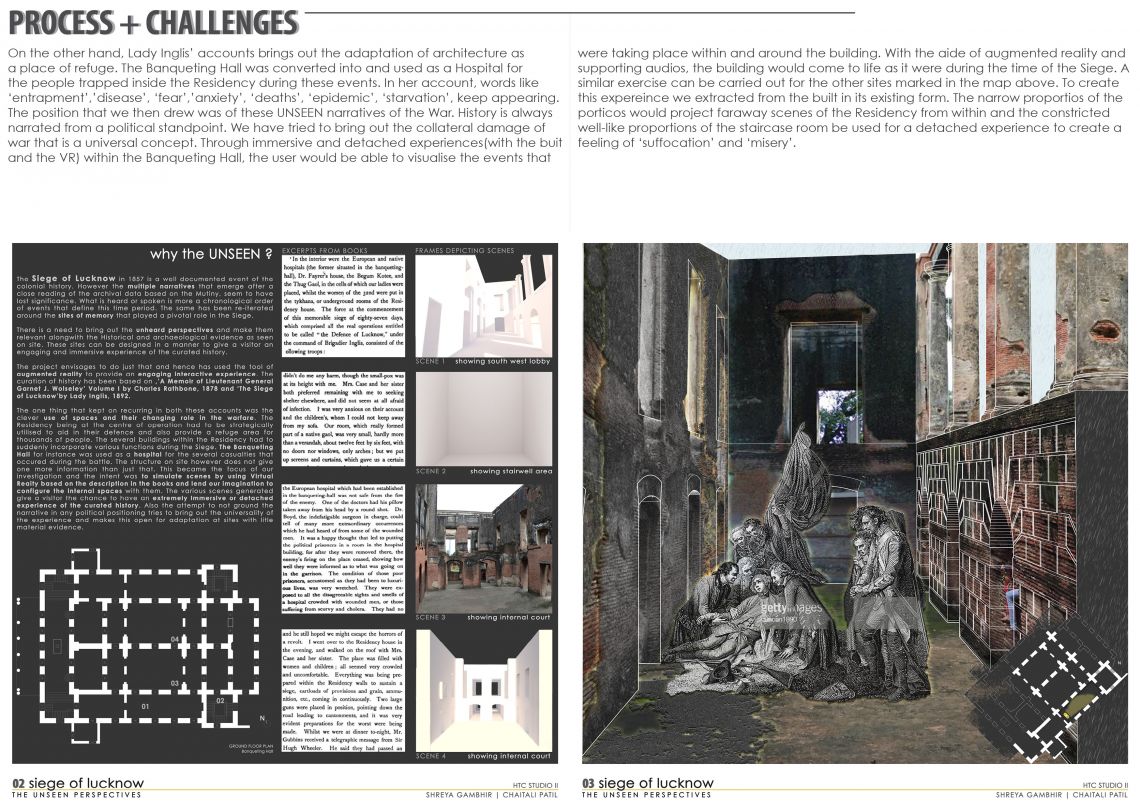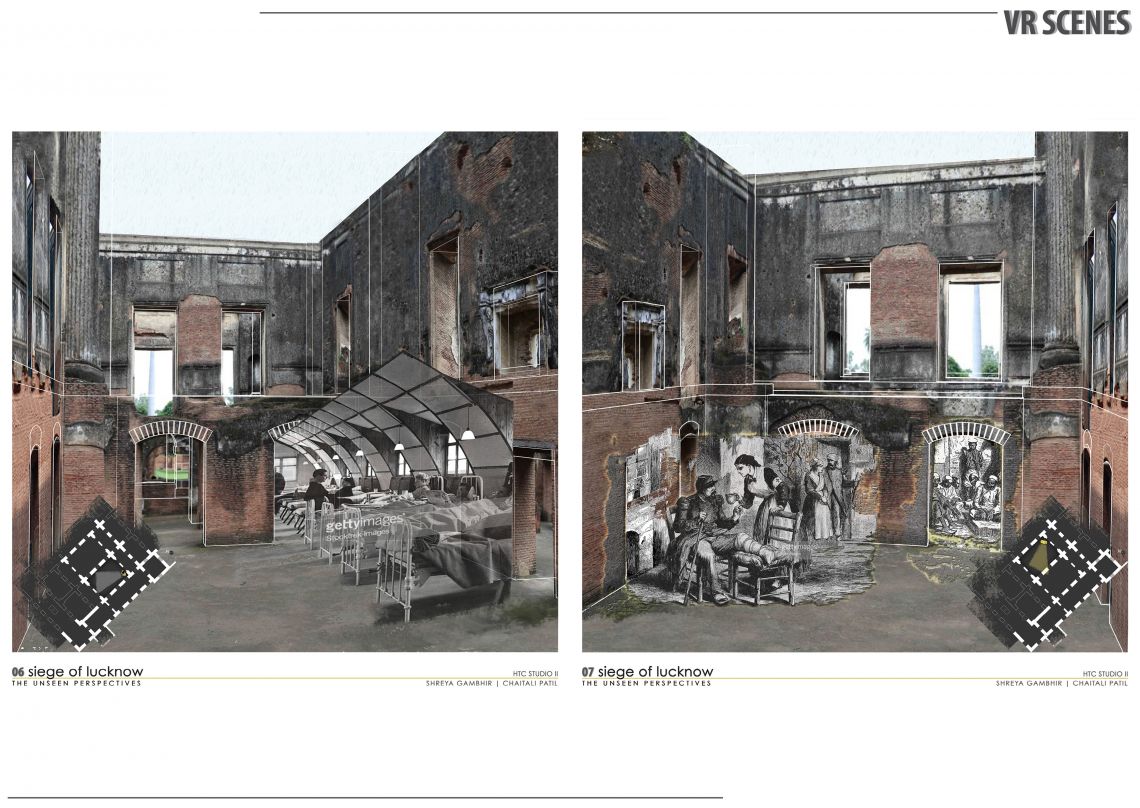Your browser is out-of-date!
For a richer surfing experience on our website, please update your browser. Update my browser now!
For a richer surfing experience on our website, please update your browser. Update my browser now!
The studio was an opportunity to contest the dominant narratives of formalism in architectural history, and to position history and criticism as an active component of contemporary architectural practice. History and architecture has more often than not been relegated to its formalist format, and “lessons from history” translate to stylistic emulations in architecture. This course shatters that constricted viewpoint and expands the application of historiography to include spatial concerns of materialism/ technology/ post-humanism/ re-appropriation/ erasures/ identity/ sexual orientations/ economics. Taking the case of a city which has rich archival material- Lucknow- the studio creates a body of critical knowledge so as to inform subsequent architectural forms for a present-day live project. Emphasis is on architectural history- both archival and material- of the city.
